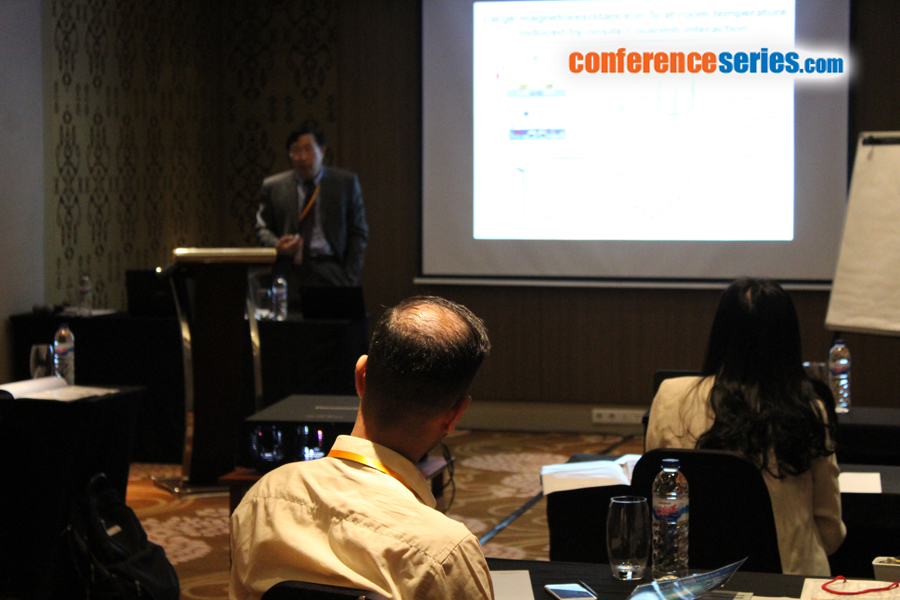
Xiaozhong Zhang
Tsinghua University, China
Title: Nonlinear effect assisted magneto resistance and non-volatile reconfigurable spin logic
Biography
Biography: Xiaozhong Zhang
Abstract
Coupling semiconductor nonlinear transport effect and Hall Effect in semiconductor, we developed a Si-based geometrical enhanced MR device whose room-temperature MR ratio reaching 30% at 0.065 T. We further coupled semiconductor nonlinear transport effect and anomalous Hall Effect in a Perpendicular Magnetic Anisotropic (PMA) material and realized a giant MR of 22000% at 1 mT in PMA material at room temperature. Based on our Si based MR device, we developed a current-controlled reconfigurable MR logic device, which could perform all four basic Boolean logic including AND, OR, NAND and NOR in one device. We proposed an alternative way to realize magnetic logic by coupling spin-dependent transport effect in magnetic material and nonlinear transport effect in semiconductor material. We further proposed a non-volatile reconfigurable spin logic-memory device by coupling anomalous Hall Effect in magnetic material and negative differential resistance phenomena in semiconductor. All four basic Boolean logic operations could be programmed with high output ratio (>1000%) and low magnetic field (~5 mT). This device demonstrated that non-volatile information reading, processing and writing could be realized in one step and one device. Hence, logic and non-volatile memory could be closely integrated in one chip. The time and energy used in the processes of information transformation and transfer could be saved. A network with these highly parallel logic-memory devices could perform massively parallel non-volatile computing and might offer a possible route to approach brain-inspired artificial intelligence beyond traditional CMOS route.


